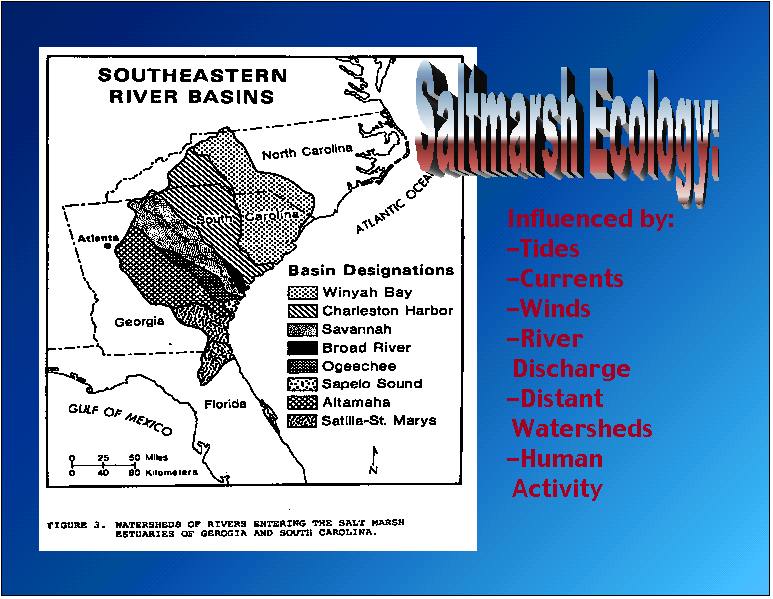
|
|
Although they take up a miniscule amount of space along the Georgia and South Carolina
coastlines, salt marshes are affected by many distant environmental and human factors
for several reasons. Most obviously, because they often serve as interfaces between
rivers and the ocean, salt marshes are affected by what comes out the mouth of a river.
All pollution added into a river, regardless of where along the river, eventually makes
its way to the mouth. This leaves salt marshes in a very vulnerable position; salt marshes
must withstand the effect of any and all pollution that has entered a river. The matter
is further complicated when one remembers that rivers all have watersheds, which can
often cover tremendously large areas. With this in mind, it is not only pollution that
is dumped directly into a river that will affect a salt marsh, but any pollution that
is released in a river's watershed is likely to eventually make its way into a salt marsh.
Figure 3 shows how great this effect can be. A total of eight rivers and their associated
watersheds affect the 200 or so miles of salt marshes along the Georgia and South Carolina
coast. All in all, the area that directly impacts these salt marshes is composed of one
half of the state of Georgia, all of the state of South Carolina and a third of the state
of North Carolina. It is mind boggling to think that such an immense area can so great
an impact on a thin band of marshes only 200 miles long. The great influence of the rivers and their watersheds causes the salt marshes to be very dynamic systems. In addition to being influenced by watersheds, salt marshes are influenced by oceanic tides, currents, winds and human activities. (graphic: NOAA #12 p.5)
| |
|